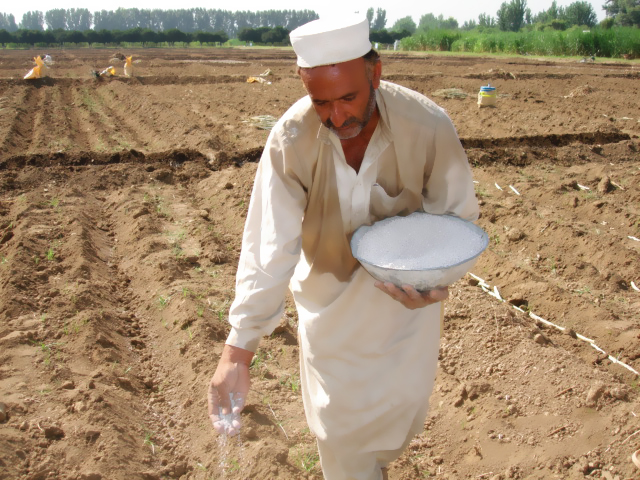
Sugarcane Nutrition
A large part of cultivated soils in Pakistan are low in certain important plant nutrients. This deficiency, mainly of nitrogen, phosphorus, potassium, sulfar, zinc, copper, iron and manganese has been shown by various fertility experiments in different parts of the country. These deficiencies are severe in irrigated sandy soils, moderate in irrigated loamy soils of old river terraces, and of a minor degree in other soils. The main causes include leaching of nutrients by irrigation water, prolonged use of exhaustive crops, high decomposition rates of organic matter in hot and arid climates, inadequate addition of organic fertilizers or green manures and continued use single-nutrient fertilizers (like urea) [IUCN, 1993].
Nutrient Deficiency Symptoms (Click to view)
Pakistan has been divided into 12 agro-ecological zones based on physiology, climate, soil land use and other factors. In Khyber Pakhtunkhwa, speaking in context sugarcane there is Northern Irrigated Plains (b) (Peshawar, Mardan, Charsadda, Nowshera, Swabi) with clayey, moderately calcareous soils, Western Dry Mountains (Kohat, Karak, Tank, and parts of Baluchistan) which have calcareous loamy soils, and Sulaiman Piedmont (DI Khan, DG Khan and Rajanpur) with laomy, clayey, strongly calcareous soils (Khan et al, 2012).
Keeping in view the soil status and that sugarcane is a heavily soil nutrient exhaustive crop because of high dry matter production per unit area, it is imparitve to take good care of nutrition in sugarcane crop. A good crop tonnage of 125 t/ha of sugarcane removes 84-100 Kg of nitrogen, 56-67 Kg of Phosphorus, and 168 Kg of Potash from the soil (Sarwar et al. 2009).
In the same way, most of the sugarcane growers only nitrogenous fertilizers while the rest use an unbalanced combination of N and P. Potash is negleted in sugarcane crop. Therefore, a balanced use of fertilizer in the life cycle of the crop is very important to get optimum cane yields. For khyber Pakhtunkhwa Nitrogen @ 173 to 222 Kg/ha, P2O5 @ 114 Kg/ha, and Potash in the range of 124 to 148 Kg/ha is recommended. In the same way, although the use of farmyard manure in KPK is better than that of Punjab and Sind, farmyard manure @ 20-25 tons per hectare one month prior to planting is also good for resoring soil fertility and structure (Pakistan Agriculture Research, 2015). As for the time of application of fertilizers, all the phosphatic and potash fertilizer may be applied in the sowing time in the furrows. The nitrogen fertilizer should be given in 3 equal splits (April, May, June) to spring planted (Februay-March) crop. For the september planted crop nitrogen could be split in 4 applications i.e. March, April, May and June.
Suggested readings/References
https://portals.iucn.org/library/sites/library/files/documents/WCS-PK-013.pdf
Khan, M.A., M. Ahmad, and H.S. Hashmi.2012. Reveiw of available knowledge on land degradation in Pakistan. OASIS Country Report 3. ICARDA.
Sarwar, M.A., F. Hussain, M. Umer, M. Bilal, A. Nadeem and A.A. Chattha. 2009. Comparative efficiency of solid and liquid fertilizers in sugarcane. Pakistan Sugar Joural. Vol. XXXIV (01): 5-8.
Pakistan Agriculture Research. 2015. Sugarcane Crop in Pakistan. Available at http://edu.par.com.pk/wiki/sugarcane/#khyber-pakhtunkhwa




